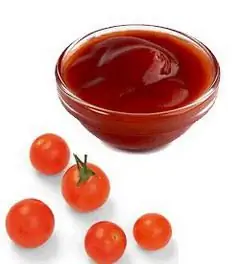Hibiscus
This delicious oriental drink of bright red color is capable of quenching and refreshing thirst on a hot summer day, and in winter - warming up, giving a feeling of warmth and comfort.
The ratio of BJU in the product

Source: depositphotos.com How to burn 49 kcal?
| Walking | 12 minutes |
| Jogging | 5 minutes. |
| Swimming | 4 minutes |
| A bike | 7 minutes |
| Aerobics | 10 min. |
| Household chores | 16 minutes |
Description
Hibiscus is a plant from the Malvov family. The correct botanical name for the plant is Hibiscus sabdariffa. Hibiscus is native to India, but is currently grown in many countries with tropical climates. It is also easy to grow at home from seeds found in a tea bag.
The plant reaches a height of 3.5 meters. The stem and leaves are green with a slightly reddish tint. The flowers reach 5 centimeters in diameter and have a bright aroma.
Hibiscus has become such a popular drink in Sudan that it is called the Sudanese rose. In Egypt it is called the drink of the pharaohs, and it is believed that it bestows immortality and vitality. In Malaysia, hibiscus is better known as bunga paradise, that is, the national flower. His image flaunts on the country's coat of arms, since Muslims believe that the five petals of the flower correspond to the five commandments of Islam.
After the flowers have faded, flower cups remain on the branches, which begin to increase in size, gaining juice. It is then that they are collected, dried and a wonderful tonic drink is prepared.
The color and taste of hibiscus tea may vary depending on where the plant grows. For example, hibiscus, grown in Egypt, has a sour taste and cherry color. Mexican hibiscus tastes slightly salty and has a deep orange color. And Thai hibiscus has a beautiful purple color and sweet taste.
Hibiscus petals, seeds and leaves are used in cooking and cosmetology. Also, all parts of the plant are used in production for dyeing fabrics.
Spreading hibiscus
In ancient Egypt, they learned about the benefits of hibiscus for a long time, and there it became a national drink. Archaeologists have repeatedly found dry parts of this plant in tombs.
In Africa and the East, hibiscus is widely used in folk medicine, believing that it helps hibiscus with pressure and many other diseases.
In Europe, hibiscus spread in the 17th century, but the drink was not particularly popular. But today its popularity is growing rapidly, especially in the Scandinavian countries.
The benefits of hibiscus
The hibiscus contains 13 organic acids, including malic, citric, tartaric. They give tea a sour taste and are excellent thirst quenchers.
The properties of hibiscus are due to the microelements and biologically active substances that make up its composition, which help to strengthen the immune system, relieve nervous tension, increase physical endurance and perfectly protect against colds and flu.
Thanks to the anthocins in the plant, hibiscus tea has a red color. In addition, anthocins strengthen the walls of blood vessels, making them less permeable, and lower blood cholesterol levels.
The benefits of hibiscus are antispasmodic action, improving bile production. The properties of hibiscus have a beneficial effect on the genitourinary system and the liver. With regular use, hibiscus normalizes metabolism, has a beneficial effect on the activity of the stomach and pancreas.
The beneficial properties of hibiscus include the prevention of diseases of the gastrointestinal tract and the facilitation of the course of diathesis. Among other things, tea has a mild laxative effect. It has already been proven that with the systematic use of hibiscus tea for two weeks, the activity of the gastrointestinal tract is normalized.
It is known to help hibiscus with pressure. So, in the hot form of the hibiscus, the pressure increases, and in the cold, on the contrary, it decreases.
An important benefit of hibiscus is also in removing the effects of alcohol poisoning. And the inhabitants of Africa have been using the flowers of the plant since ancient times to stop bleeding in case of cuts.
Application of hibiscus
Hibiscus is used in cooking. Fresh leaves are put in meat, fish dishes, in vegetable salads. Dry hibiscus seeds are added to soups. Delicious jam is made from the petals of the plant.
Hibiscus is also used in cosmetology. So, ice cubes from brewed hibiscus perfectly refresh and tone the skin. It is also used in peeling mixtures along with coffee.
Hibiscus tea is prepared in different ways. It is brewed in porcelain or glassware. In this case, hibiscus can simply be brewed with boiling water, or cooked for a while over a fire. Hibiscus is also infused in cold water, making an equally delicious refreshing drink.

Hibiscus harm
Do not abuse hibiscus tea for people suffering from gastritis with high acidity and peptic ulcer disease. Can harm hibiscus to people with very low blood pressure.
Tea is contraindicated for small children under one year old.
It can also harm hibiscus in case of individual intolerance.
YouTube video related to the article:
Found a mistake in the text? Select it and press Ctrl + Enter.







